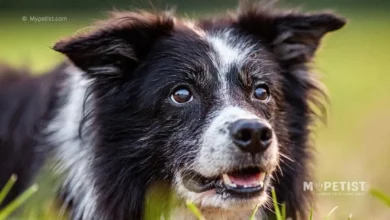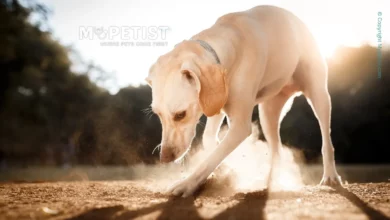How to Stop A Dog From Jumping On People
As much as we love our furry friends, a common problem among many dog owners is their pet’s habit of jumping up on people. While it may seem like an act of affection, this behavior can be overwhelming, embarrassing and even dangerous, especially when it comes to larger dogs.
Not only do they unintentionally knock people over, but they may also end up scratching or injuring them with their paws. In order to prevent this, it is important to understand why dogs jump and learn some effective techniques to help them stop. In this article, we will guide you through the steps and provide some useful tips to help you teach your dog to refrain from jumping on people.
Table of Contents
Explanation of why dogs jump on people
Dogs have been known to jump up on people as a way of greeting. This behavior can be quite annoying and potentially dangerous, especially if the dog is not well trained. Understanding why dogs jump up on people is the first step in knowing how to stop it.
Dogs are naturally sociable and are motivated by the desire to greet and interact with people. Thus, when they see someone, they’re excited and can’t help but jump up on you to get closer to your face. Unfortunately, jumping on people is inappropriate behavior, and owners need to teach their dog how to greet strangers without jumping up.
To stop your dog from jumping, you will need to train your dog to sit and stay when they see people, all while keeping them calm and under control. Teaching your dog proper behavior through positive reinforcement will ensure a calm and safe interaction between your dog and other people.
Importance of correcting the behavior
Correcting behavior problems is crucial for a dog’s overall well-being and their interactions with humans and other dogs. Without proper training, dogs can develop unwanted behaviors such as excessive barking, chewing, aggression, and jumping behavior.
A well-experienced trainer can help correct these behavioral problems and teach dogs basic commands such as ‘sit’, ‘stay’, and ‘paw’. One important aspect of correcting behavior is to teach a dog not to jump on people which can be dangerous and uncomfortable for some.
Dog training benefits not only the dog but also the owner as a well-trained dog can make for a great companion and a happy household. Therefore, it is important to seek help from a trainer whenever a dog exhibits behavior problems, which can be resolved with proper training methods.
Understanding the behavior of Dog Who Jumps
Common triggers for jumping of dog on people
Jumping on people is a common habit among dogs, but understanding its triggers can help you prevent or manage it. One of the major triggers for jumping is when you turn your back to your dog. Some dogs see this as an opportunity to get your attention, which leads them to jump on you.
Another trigger is giving your dog attention when they jump on you. Dogs love attention, even negative attention, so if you give them attention when they jump, they’ll feel reinforced and may jump more often. Not having a leash on your dog is also a trigger for jumping, as it gives them more freedom to jump on people.
Some dogs also jump to get your attention or to ask for a paw, which is a cue they love to give. Knowing what triggers your dog to jump and working on ways to redirect their behavior can help you have a better relationship with your furry friend.
Body language that signals a dog’s intention to jump
Dogs are unable to communicate with words like humans do, so they rely heavily on their body language to convey their intentions. When a dog intends to jump, their body language is quite clear. They tend to stand on their hind legs or may even place their front paws on the person or object they intend to jump on.
They may also wag their tails frantically, showing their eagerness to play or interact with the person or object in front of them. In addition, their ears may be perked up and their eyes might be fixed intently on their target. All these nonverbal cues indicate that the dog is ready for action and is about to jump.
It’s important for pet owners to pay attention to this communication and be aware of their pet’s body language to avoid any accidents or unwanted behavior.
Training techniques to stop jumping
1. Positive reinforcement
Positive reinforcement is an effective training technique to stop jumping behavior in dogs. Dogs may jump on people out of enthusiasm or to get attention. As a pet owner, it is important to teach your pup that a greeting should consist of four paws on the floor. Jumping can be discouraged by rewarding the behavior you want from the dog.
When the dog greets someone with all four paws on the floor, give them a treat or praise. This allows the dog to associate good behavior with a positive outcome. Asking your dog to sit before a greeting also helps to reinforce this behavior. The key to positive reinforcement is consistency, so it is important to practice this method every time your dog meets someone new.
By using these techniques, you can effectively train your dog to greet people with four paws on the floor, creating a positive experience for both the pup and the visitor.
2. Consistency and repetition
Consistency and repetition are essential training techniques to stop jumping in dogs. Dogs often jump out of excitement, but repeated jumping behavior can become a nuisance for their owners. Consistency involves reinforcing appropriate behavior and correcting jumping behavior every time it occurs.
One of the best ways to promote consistency is to make everyone who interacts with the dog aware of the training goals and methods. Repetition reinforces the training and creates a habit of good behavior. Consistent and repetitive training techniques help the dog understand that jumping is not acceptable.
To stop jumping, it is essential to use positive reinforcement methods, such as offering treats or affection, when the dog behaves appropriately. With time and patience, dogs can be successfully trained to stop jumping using consistency and repetition.
3. Redirecting attention
Redirecting attention is a useful training technique for dogs who have a habit of jumping on people. When a dog jumps up to greet someone, it may be because they are excited or want attention, and some breeds may jump out of habit.
To stop this behavior, redirecting their attention to something else can be helpful. For example, teaching a dog to sit and stay when someone enters the house can help prevent the urge to jump up. Using toys or treats as a distraction can also be effective.
Whenever a dog begins to jump, redirect their attention to the toy or treat, and praise them for focusing on that instead of jumping. Consistency is key with this method, as it may take time for the dog to learn the new behavior, but redirecting attention can be a successful training technique for stopping jumping in dogs.
Preventative measures
Proper socialization is a key preventative measure for dog jumping on people. Hiring a professional dog trainer can help with this process, as they can provide guidance on how to socialize your dog with people and other dogs. It’s important to teach your dog appropriate behavior from a young age to prevent jumping habits from forming.
One technique is to ignore your dog when they jump up and only give them attention when they have “four on the floor,” meaning all four paws are on the ground. Consistent reinforcement of this behavior can help prevent jumping in the long run. Additionally, exposing your dog to a variety of situations and people during socialization can help them learn appropriate behavior in different settings.
Overall, proper socialization is crucial for preventing unwanted dog behavior such as jumping on people.
2. Exercise and mental stimulation
One of the most common complaints of dog owners is their dog jumping on people, and it can be a difficult behavior to control. However, there are preventative measures that can be taken to reduce the likelihood of this behavior.
Regular exercise is essential, as it helps to reduce anxiety and keep dogs calmer overall. Dogs that aren’t getting enough exercise may become bored or anxious, leading to jumping up behaviors. Additionally, mental stimulation is vital for preventing jumping, as it gives dogs an outlet for their natural desire to explore and investigate the world around them.
Engaging your dog in training and games that challenge their mind can help keep them mentally stimulated and reduce the likelihood of jumping up. By incorporating both exercise and mental stimulation into your dog’s routine, you can reduce the chances of them jumping up on you or others.
3. Management techniques (e.g. leashing)
Management techniques such as leashing can be effective preventative measures for dogs that have a tendency to jump on people. When a dog is on a leash, it restricts his movement and makes it difficult for him to jump up.
Additionally, it allows the handler to control the dog’s behavior and prevent any unwanted jumping. Another useful technique is to teach the dog a “sit” or “stay” command, which can be used when guests arrive or in situations where jumping may occur. Providing the dog with plenty of exercise and mental stimulation can also help reduce the likelihood of jumping behaviors.
It is important to note that while management techniques can help prevent jumping, it is equally important to address the underlying behavioral issues that are causing the jumping in the first place. A professional dog trainer may be necessary to help the dog learn appropriate behavior and prevent jumping in the long term.
Final Thoughts
it is essential to reiterate the importance of training and preventative measures to maintain a safe and healthy environment. We have discussed various techniques and strategies to prevent accidents and minimize the risks associated with hazardous situations.
It is crucial to exercise patience and persistence in executing these measures, as they may take time to take effect. In case of emergencies or incidents, it is essential to remember the importance of seeking professional help immediately.
Remember that there is always someone available to provide expert advice and support. Keep in mind that it is better to be over-prepared than caught off guard, especially in situations where lives and property are at stake. With careful planning and diligent execution, we can ensure that we face fewer risks and avoid dangerous situations in the future.




